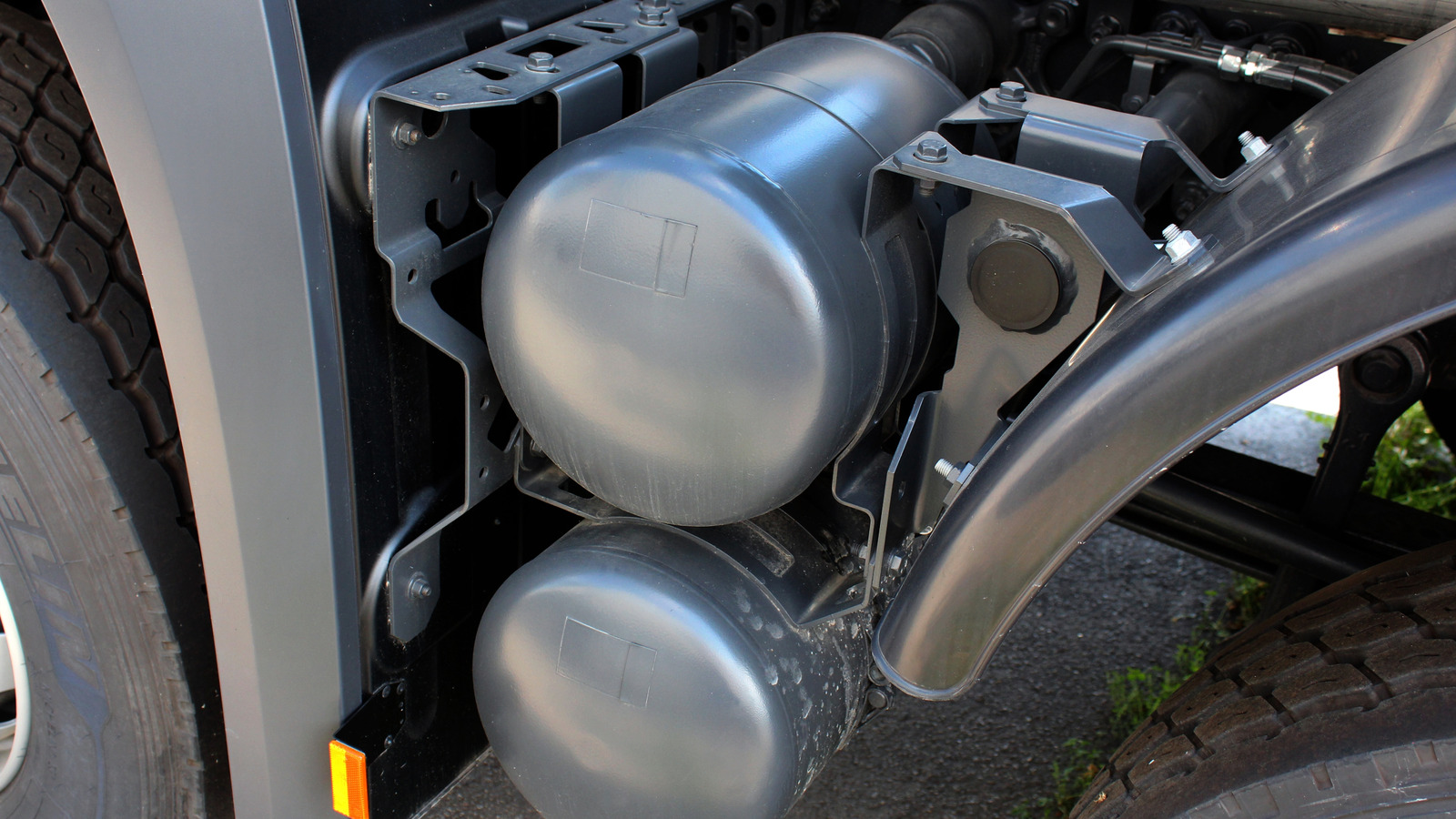Many of the larger vehicles on our roads have one intriguing thing in common: They can make sudden, loud, gas-escaping hissing noises. These noises, admittedly, have made this writer jump — on more than one occasion — while passing close by, but it's for a vital cause. Semis and similarly sized vehicles, like buses, have air brakes, and that sound is made by the safety valves resetting the air pressure after use.
True air brakes are largely unheard of in cars, though McLaren boasts that its unique and super pacey Speedtail is equipped with ailerons that "extend at high speed to provide balance and provide airbrake function." It's difficult, however, to compare the sleek Speedtail to a heavy, hard-working truck or bus: While the former's ailerons are designed to ensure smooth airflow across the vehicle's body and cut the effects of drag, a truck primarily uses air brakes to provide the braking force required to help drivers bring their heavy and often heavily laden steeds to a stop. There are other advantages to using an air-brake system as well.
Here are the reasons why air brakes are used in big trucks, as well as how they work and how they differ from the conventional hydraulic brake systems typically found in cars. Truckers have very different driving experiences compared to those who drive other autos. Though driving a lightweight vehicle is no walk in the park, taming a laden truck is something else entirely.
The very fact that 80,000 pounds is the maximum gross vehi.


















